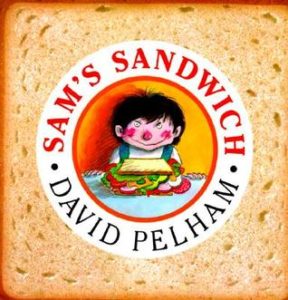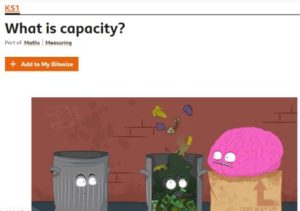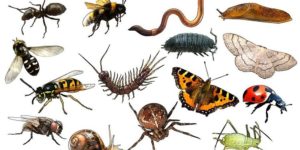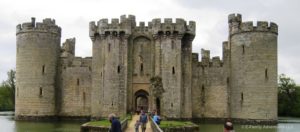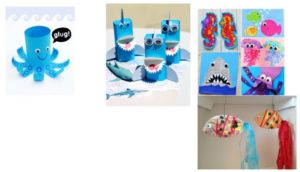Dear all
We hope that you all had a good first week back after the Easter Holiday. The sun continues to shine and the summer is coming!
Here is our home learning for the week including our weekly family science activity and music exploration. We so hope that you enjoy this learning together.
Don’t forget to look at Sumdog for maths, reading and spelling challenges which will be updated each week. See also mymaths for maths challenges.
English reading and writing
The Sam’s Sandwich sequence of lessons is a great learning activity. You will need a pencil and paper before you start the online learning for this story! You will be doing some phonics, exploration of interesting vocabulary and answering comprehension questions! As the week goes on you will be writing a set of instructions. If it is a bit tricky or moves too fast for your child just focus on the key phonics being taught and on verbally telling the instructions and writing some simpe sentences using the time seqeuncing vocabulary.
Reading
Below are a series of lessons for the week which are based on the book above.
The link below also has a range of ideas of how to develop a love of reading for your child. See page three. We are sure that you are doing many of them already!
Menu of reading response ideas KS1
https://www.bbc.co.uk/bitesize/articles/z6rpnrd
https://www.bbc.co.uk/bitesize/topics/zt9k7ty/articles/zp8crdm
Measuring water!
Maths to do in the bath or in the garden.
Use a selection of different measuring jugs and everyday bottle and containers.
Note for Parents/Carers
Encourage your children to look at the shape and size of different containers and bottles. They should understand that even though some may be taller, this does not always mean they hold the most as some are shorter yet wider.
They should be able to talk about some of the common bottles they use (lemonade bottle, milk bottle) and know how much they hold and see which are the same by pouring the contents of one into the other.
Can you fill the different containers to the top so they are full?
Can you make them half full/half empty?
Which containers do you think hold the same amount of water?
How can you check?
Challenge
Look at the containers in your house. Do they have measurements on them?
Which container holds the most?
What are they used to measure?
Could you use them to measure a glass of water?
Can you make some jelly with an adult? You will need to carefully measure out the water!
Extra Challenge
How many 500ml (1/2 litre) containers will fill a 1 litre container?
Spelling
Choose a set 1 or set 2 and practise spelling.
Set 1: do, of, all, is
Set 2: pull, put, were, by
How many times can you write them in 1 minute? Set yourself a challenge!!
Try to look at them, cover the word and then write and check. Did you spell it correctly? Can you write a sentence containing the word?
Science
Go on a mini beast hunt. Count the mini beasts that you find.
Which was the most common?
Which was the least common?
Where did you find them?
Make a home for a mini beast.
Topic
How was a castle built to prevent attack?
https://www.bbc.co.uk/bitesize/topics/z74jpv4/articles/zhrb6v4
Watch the film and learn about how castles were built to fend off attackers. Make a list of the different methods that builders used to protect those inside from their enemies. Can you draw some pictures of some of these features and write a sentence or some key words for each to explain how they worked and whether you feel they would have been good defensive ways of protecting your castle or not?
https://www.youtube.com/watch?v=Rj6DNfzw8-g
https://www.bbc.co.uk/bitesize/topics/z74jpv4/articles/zn4rhbk
Watch this clip to learn what it was like to be under siege!
Music
Tortoises
Close your eyes and listen to:
https://www.youtube.com/watch?v=oEjb_VoHI2g
Can you move around to the music? Is it slow or fast?
Now move around to:
https://www.youtube.com/watch?v=4Diu2N8TGKA
Is this slow or fast?
What else did you notice?
Did you spot that they are the same tune? Saint-Saens slowed down Offenbach’s famous Can- Can music and used it to represent tortoises.
Family Science Activity – Friday 24th April –
STATIC MAGIC
The activity: Make objects move without touching them by charging them with static electricity.
Experiment: with different objects to see how static electricity affects them. Learn about charged particles like electrons and how things gain or lose charge.
https://www.rigb.org/families/experimental/static-magic – for a video clip about the experiment and a full version of the activity information sheet.
What you will need:
• A balloon • A cotton towel or T-shirt or a woolly jumper • Some scrap paper • A paper/plastic drinking straw (optional) • An empty 500ml plastic drinks bottle (optional) • A hard plastic comb or ruler (optional) • Other household objects to test.
What to do:
- Charge up a balloon and try picking up scraps of paper with it.
- Investigate whether the amount you rub the balloon affects how much paper it can pick up.
- Investigate whether the size of the scraps of paper makes a difference.
- Find out how close you have to be to the paper before the balloon makes it move.
- Try bending a stream of water like Hector does in the video.
- Try balancing a straw on top of a bottle lid and seeing if you can make it spin like in the video.
- Find out which objects are attracted to the charged up balloon and which are repelled by it.
- Try holding a charged balloon near your hair or your skin.
Going Further:
Try rolling an empty soft drink can along the ground using a charged up balloon http://bit.ly/StaticCanRoll
Try lighting up a fluorescent lightbulb with a charged up balloon – as described here: http://bit.ly/LightBulbBalloon
Try tying two balloons to strings and seeing if you can charge them up with static electricity then hang them up so they repel each other.
Read more about static electricity http://bit.ly/ MoreStaticScience
HAVE FUN!
Art Challenge: UNDER THE SEA
The title for your art this week is ‘Under the Sea’. This can take the form of a drawing, a painting, a sculpture, a collage or anything else that you would like to create. As always, I’m sure you will impress me with your creativity!
Here are some ideas
Please email your artwork to me:
n.pearson@stpeterswaterlooville.hants.sch.uk
Thank you
Keep creating and keep safe!
